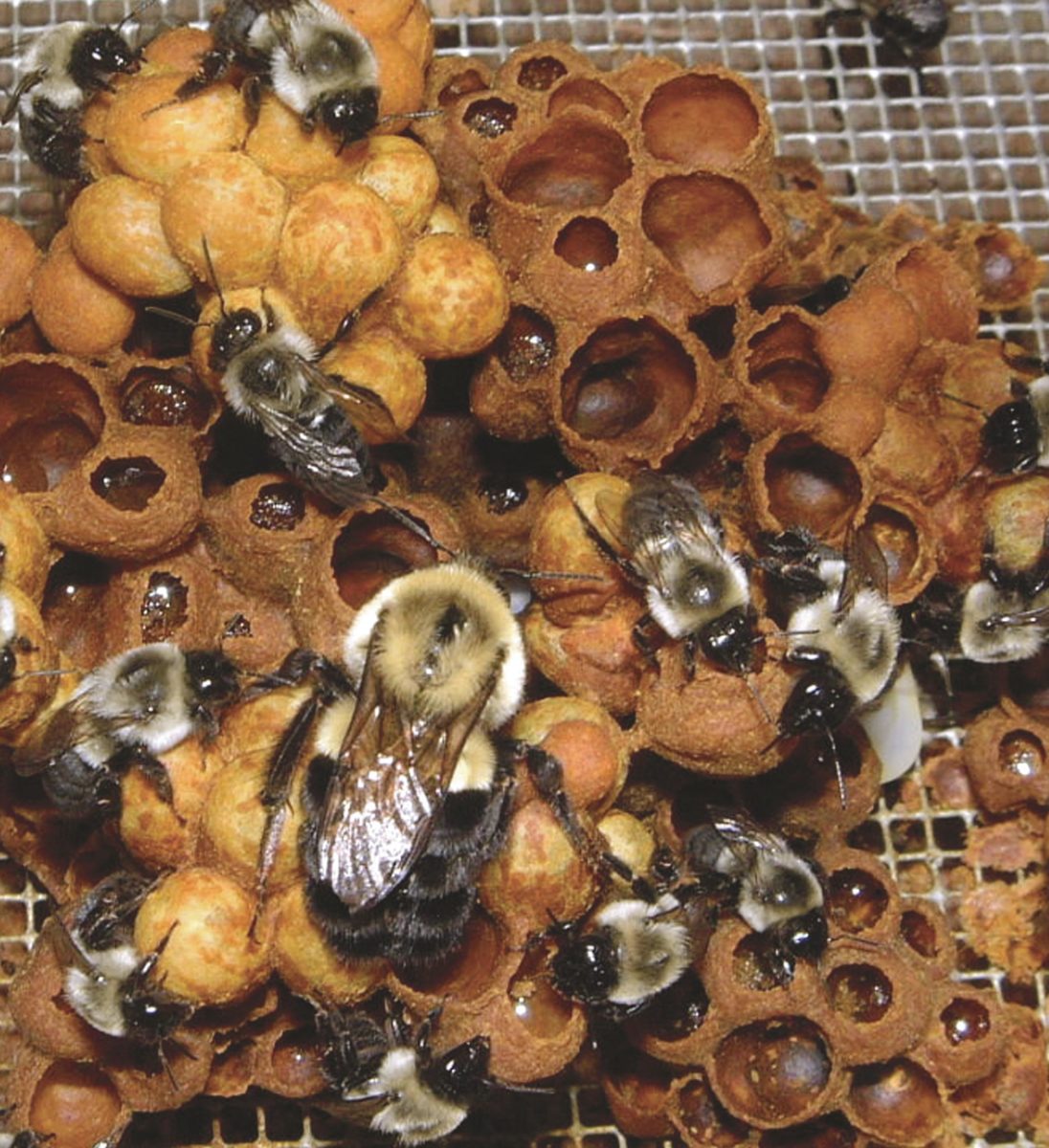
Worldwide, there are approximately 250 species of bumble bees. Over 40 bumble bee species are native to North America. Of these, only one species, Bombus impatiens, is currently reared by commercial producers in North America. Bumble bees vary greatly in size, with bees weighing from 40 to 830 milligrams (0.0014 to 0.029 ounces). There is variety in size both among species and within species. There are three types of bumble bees: queens, workers, and males. Males and workers are similar in size, but the queens are much larger, sometimes three times the size of workers or males. Early in the season, when there are fewer workers in the colony to collect pollen, the workers are often smaller because their size depends on how much food the bees are fed as larvae. As the colony population grows, and more workers bring in more pollen, the colony will produce larger workers.
Bumble bees are social insects, living in colonies consisting of a queen and her offspring. As in most societies, through cooperation and division of labor, the social colony has greater productivity than the sum of each individual’s abilities. Tasks are divided among the three types of bees. The queen’s prime duty is to lay eggs. The workers collect food, tend the young, and clean and defend the nest. The male’s sole purpose is to mate with queens.
Most of the queen’s offspring are females. As with honey bee queens, the bumble bee queen has control over whether or not she fertilizes an egg. If the egg is fertilized, it develops into a female. If the egg is unfertilized, it develops into a male. Females can be either queens or workers. Whether or not a female egg develops into a queen or worker is primarily dependent on the amount of food she is fed as a larva. Queens are significantly larger than workers and require much greater amounts of pollen (Figure 5.2). Queens are usually only produced at the end of a colony cycle, when there are enough worker bees present in the colony to bring in sufficient amounts of pollen for queen development. Since queens are two to three times the size of workers, they require two to three times the amount of pollen for their development. Queens are the only females to mate and produce female offspring. Workers are able to lay eggs, but since workers do not mate, these eggs will become male. Most males are produced by the queen late in the colony cycle. For some species, the end of the colony cycle is midsummer, for others it is late summer.
